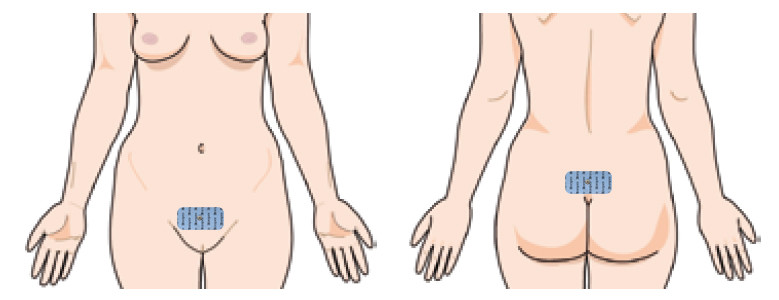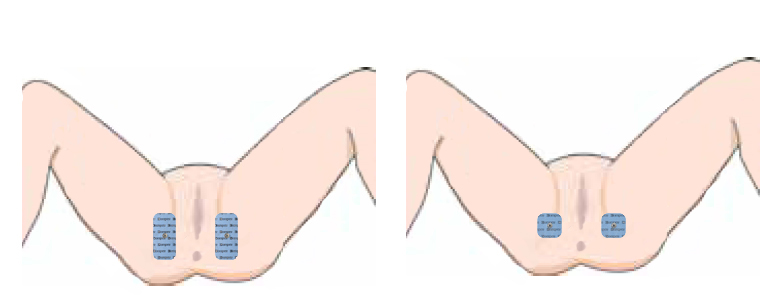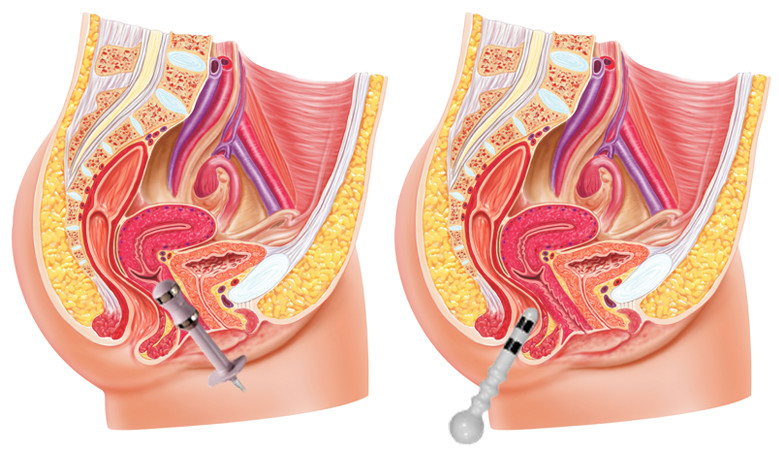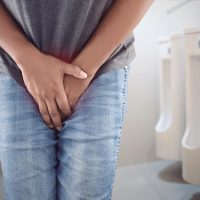Incontinence Treatment
One of the most effective ways to treat incontinence is muscle stimulation. A muscle stimulator device is usually a very simple tool, and its use is not complicated once you're properly instructed on the steps.
The Role of the Pelvic Floor Sphincter Muscles
Healthy pelvic floor sphincter muscles surround the urethra and anal opening, and the more the urine or stool presses from above, the tighter they close. In different forms of incontinence, this closing ability is lost due to weakness, stretching, decreased squeezing force of the pelvic floor muscles, or overactivity of the bladder.
The strength of voluntarily controlled muscles is maintained by physical activity, that is, they can be trained. Various pelvic floor exercises aim to improve the strength and tone of the sphincter muscles by specific contractions and training. Such exercises demand time, and even with daily training, months are needed for improvement.
Why Muscle Stimulation?
With muscle stimulators, the same muscle exercises are performed in a targeted, concentrated way, and the effects are significantly faster and stronger. Generally, a definite improvement can be achieved after 2-3 weeks of treatment, and usually full recovery within 3 months. Afterwards, maintenance treatment (less frequent, 1-2 times a week) can be switched to.
For incontinence, the advantage of muscle stimulation over "simple" exercises is clear-
The Importance of the Proper Treatment Program
Incontinence can occur for various reasons.
- In stress incontinence, the pelvic floor muscles become weak and do not provide sufficient support. The goal of treatment here is to strengthen the muscles.
- In urge incontinence, the muscle tone is increased, so the aim of treatment is to relax them.
- In mixed incontinence, both of the above occur, so the treatment program consists of multiple phases — parts to strengthen muscles and parts to reduce tension.
When you notice incontinence, the first step is to consult a doctor to determine the type of incontinence.
Then you need a device that has treatment programs for the various types of incontinence. At the end of this article, you will find some suggested devices.
Preparations
- Before using an electrotherapy stimulator, check whether electrostimulation is contraindicated for you.
- Find a place in your home where you can calmly perform this intimate treatment.
- Do not turn on the device yet!
- Depending on whether you use skin-surface or internal treatment, prepare self-adhesive electrodes or a probe.
- Connect the electrodes or the vaginal (or anal) probe connectors to the cable, then connect it to the device.
- The self-adhesive electrodes come pre-gelled, so you do not need to wet or apply gel (in fact, doing so damages the adhesive).
- If using a vaginal (or anal) probe, wet it with water or use lubricant gel to assist insertion and impulse transmission. Lubricant is especially helpful in case of vaginal dryness.
- Get comfortable. You can be sitting, half-lying, or lying down. You can even change posture or move during treatment without harm; however, a relaxed resting position is best.
Performing Incontinence Treatment
- Apply the self-adhesive electrodes to the skin as shown in the diagrams below, or
- Insert the vaginal probe into the vagina as if placing a tampon. Depending on body type, insert about 3-5 cm. The part where the cable connects should stay outside the body. For example, the PeriSphera O probe has a "stopper" at 5.7 cm, which is the maximum depth, but for slim builds, insert less.
- If using an anal probe, insert it like a suppository into the anal opening. The probe’s end has a thicker "bump". Insert slowly, you will feel when the "bump" passes the external and internal sphincters. Insert about 2-3, max 5 cm depending on body type.
- The PeriSphera O probe has a circular electrode surface, so orientation does not affect treatment.
- Some electrodes have metallic surfaces on two sides; orient these so the metallic sides face forward-backward.
- Now turn on the device by pressing the Power button.
- Select from the device menu the program corresponding to your symptoms. The type of incontinence is crucial—stress, urge, mixed, and fecal incontinence require different impulses.
- Then start increasing the intensity (usually with a plus or upward arrow button).
- Initially, you will feel nothing, then a tingling or pinching sensation will appear. This is caused by the electrical current and is not unpleasant.
- Gradually increase the electric current intensity.
- For probes, maximum current is typically 10-30 mA. Do not exceed 30 mA.
- The stronger the current, the stronger the contraction you feel. But higher currents can cause uncomfortable tingling. If uncomfortable, reduce intensity slightly. Treatment should not be painful.
- The device display usually shows the treatment time remaining and turns off at the program's end.
- When finished, turn off the device.
- If you used self-adhesive electrodes, remove them from your skin and place them back on the plastic sheet.
- If you used a probe, remove it carefully by holding the probe’s rim, not the cable, to avoid damage.
- Clean the probe with lukewarm water. Do not place it in boiling water or microwave.
- You may use a disinfectant solution for probe cleaning.
- Wipe with a damp cloth or disinfecting wipe if necessary. Do not use corrosive cleaners or disinfectants that can damage your device.
- Dry the probe thoroughly and store it in a clean, dry place.
Electrode or Probe Placement
Incontinence treatment can be done through the skin with self-adhesive electrodes or "internally" using a probe inserted into the vagina or anus. These methods are not completely equivalent. Using a probe allows direct close-range stimulation of the pelvic floor muscles, making this treatment somewhat more effective than with self-adhesive electrodes.
Transcutaneous Stimulation 1: Pubic Bone – Sacrum
Many stimulator manufacturers recommend this electrode placement. However, in my opinion, the electrodes are positioned quite far apart, making pelvic floor treatment less effective. Also, not only the pelvic floor but possibly lower abdominal muscles may contract if the impulse passes through them.

This method requires two large (e.g., 50x90mm) self-adhesive electrodes. One is placed on the pubic bone. Hair should be removed. For men, position it 2-4 cm above the base of the penis. The other electrode is placed at the sacrum (lower back). Both electrodes connect to the ends of the same stimulating cable. After selecting the stimulation program suitable for the incontinence type (stress, urge, or mixed), increase the impulse until clear contractions occur.
As mentioned, this method is often recommended elsewhere, but I believe pubic bone to sacrum placement is moderately effective for incontinence because it's too far from the pelvic floor.
Transcutaneous Stimulation 2: Upper Thigh
You can use either large (e.g., 50x90mm) or smaller (e.g., 50x50mm) self-adhesive electrodes. Place electrodes on both sides in the groin crease. Position them so that the vaginal or anal opening is between them. Keep about a palm’s width between electrodes. After selecting the suitable program for your incontinence type, raise the impulse until clear contractions occur in the pelvic floor muscles.
I consider this version more effective because the stimulation directly targets the pelvic floor. It can approach the effectiveness of internal probes. The self-adhesive electrodes are easier to use than internal probes.
Possible Methods of Internal Stimulation
In the diagram below, you can see the position of a vaginal probe on the left and an anal probe on the right. The two cable ends are connected to the two probe connectors. After selecting the appropriate stimulation program for your incontinence type, increase the impulse until clear but comfortable contractions are felt in the pelvic floor muscles.
Fine-tune the electrode position with small movements (deeper, shallower) and rotation to find the position where the strongest contractions are felt. Use a lubricant to insert the probe, which also aids impulse transmission.

I recommend trying all suggested methods! Based on experience, you can decide which offers better effect for you.
When to Expect Results?
The effect of muscle stimulation applied during incontinence treatment manifests similarly to exercise. If done rarely, effects resemble going for a run once a month—none. If you start with too frequent or intense treatments, you will fatigue muscles not prepared for it. The golden mean is key. In the first two weeks, perform treatments every other day. Then you can switch to once daily.
If you follow these guidelines and set sufficient intensity, you will definitely feel improvement within weeks. Within 2-3 months, you can completely eliminate your symptoms. This is a short time compared to how long the symptoms took to develop, and how long you have suffered.
If symptoms disappear, that’s wonderful, but don’t relax! If treatment is completely stopped, muscles weaken again, loosen, and unwanted symptoms return. Therefore, perform maintenance treatments once or twice weekly to keep good condition. If symptoms recur, resume intensive treatment temporarily.
Muscle stimulation is an excellent and effective method, and can be done safely in your own home.




